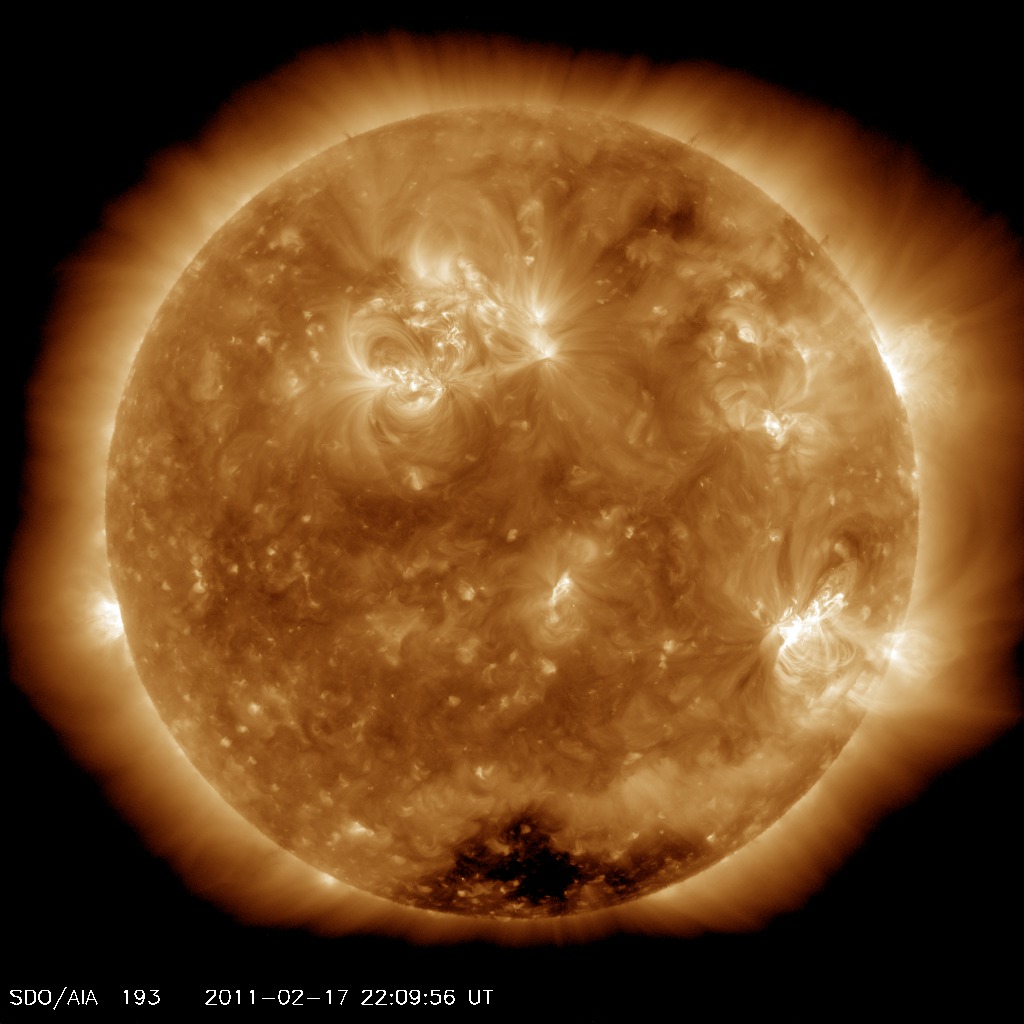As a meteorologist, I not only monitor the weather down here on our own planet, but that of our solar system, especially the sun! Activity on the sun roughly follows an 11-year cycle, and the sun has been relatively dormant for several years. Now, our sun is starting to "fire" back up. On February 14th, a class X solar flare, directed toward Earth, erupted from our sun along with coronal mass ejections (CME's - basically large blobs of plasma). The flare reached our atmosphere on the 17th where they interacted with Earth's magnetic field and caused geomagnetic storms. While this caused some spectacular auroras in the Arctic circle, it also wiped out radio communications in the Western Pacific Ocean and parts of Asia and caused several airline to reroute polar flights to avoid radio outages.
 |
| Image of the sun from Feb. 17th, 2011, 4:09 PM CST. |
NOAA scientists are now warning that the increased activity in space weather (a.k.a solar activity) could pose serious problems here on Earth in the coming years (the solar maximum or peak in activity is expected around the year
2013). A severe solar storm not only has the ability to interrupt radio communications around the globe, but has the ability to take down all telecommunications and power grids (yes... even this will even effect all cell phone communications!). Noaa administrator Jane Lubchenco is urging that the country needs to work on being better prepared for such an occurance. Lubchenco said "This is not a matter of if, it's simply a matter of when and how big... We have every reason to expect we're going to be seeing more space weather in the coming years, and it behooves us to be smart and be prepared."
Experts say that we were fairly lucky with our most recent solar storm in mid-February. Our space weather hasn't posed quite such a threat in the past. During the last solar maximum close to 10 to 11 years ago, our world wasn't as dependent on satellite communications, cell phones, and GPS - all of which could be disrupted by solar flares.
Our power grids are also a cause for concern. If a solar storm were to damage them, there could be power outages for days, weeks, months, or even longer! In March of 1989, a solar storm impacted Earth's magnetic field and caused a massive black out over the Quebec province of Canada for up to 9 hours! Much needs to be done to better prepare our systems in the event of a major solar storm.
With all the risk, there is still a reason to be optimistic about the jump in solar activity. Work is currently being done to improve the ability to forecast solar storms in advance, install more radiation shielding on satellites, and fortify power grids with more resilient transformers and capacitors.
Now I must stress that you shouldn't worry about this and begin to panic. Scientists and other experts in the nation are hard at work in fortifying our systems. So please sit back and relax. And as Stephan Lechner from the European Commission's Joint Research Centre said (and I really like this quote!), "Please don't leave the room and tell everybody that space weather will kill us tomorrow."
Enjoy the winter weather.... Spring is almost here!
If you would like to follow the ongoing space weather, go to http://www.spaceweather.com/
